Laurence and Patrick Seguin discovered the work of Jean Prouvé, in the late 1980s, through his furniture designs. They were immediately struck by the unique aesthetic of these pieces, where the artistic skill lies wholly in imperceptible technical mastery devoted to enhancing the strength of the materials. While at the time very few people had even heard of Jean Prouvé, their enthusiasm for his captivating lines was immediate, a revelation that became a true passion.
The couple then began to take an interest in Jean Prouvé’s work as a whole, of which the furniture is only a part, going on to discover his architectural designs. With the idea that “there is no difference between constructing a piece of furniture and constructing a building”, Jean Prouvé applied the same design approach to both fields, basing all of his work on it.
From the opening of their gallery in Paris in 1989, Laurence and Patrick Seguin began to work in earnest promoting the creations of Jean Prouvé, with the result that the most important international collectors and the most prestigious museums now have works by the French architect and designer in their collections. Indeed today Jean Prouvé is held to be one of the key exponents of twentieth century design.
Laurence and Patrick Seguin are now presenting a number of works from their private collection for the first time: around 40 pieces by Jean Prouvé, most of which are prototypes or extremely rare, from the armchair designed for the University dormitory of Nancy in 1932 to the light armchair created for the University of Antony in 1954, to the furniture produced for Africa.
The same principles of functionality and rational fabrication that the designer applied to furniture often destined for the public sector, can also be found in Prouvé’s architectural designs: the same solid structures feature clever mechanisms for assembly and organisation that enable both the furniture and the constructions to be easily moved, disassembled and modified.
The Maison Metropole (8×12 meters) has been mounted for the first time on the Lingotto track. In 1949 this aluminum construction won a Ministry of Education competition for “mass-producible rural school with classroom and teacher accommodation”: a masterpiece of nomadic housing, followed the portico principle patented by Prouvé in 1939. The Ateliers Jean Prouvé built two of them, one in Bouqueval, near Paris, and the other in Vantoux in Moselle, which will be on show in Turin.
Taking four people three consecutive days to assemble, a stop-motion film has been made of the construction process, with video footage streamed on the Pinacoteca website.
The Laurence et Patrick Seguin collection includes contemporary art that coexist at their home with Jean Prouvé furniture. Some have a liason with Jean Prouvé, as the mobile made by Alexander Calder for Prouvé; and the one by Richard Prince, who has made especially for them an artwork using a table by Jean Prouvé as pedestal.
They decide to show these works at the Pinacoteca Agnelli together with the ones by Jean-Michel Basquiat, Adam McEwen and Mark Grotjahn.
Information from Pinacoteca Giovanni e Marella Agnelli.
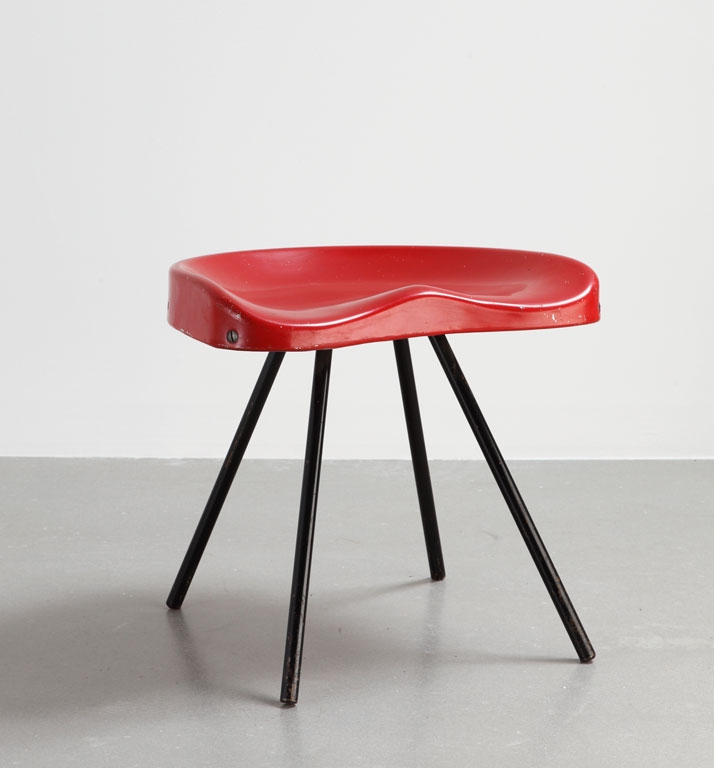 STOOL N°307, 1951 STEEL TUBE, PRESSED ALUMINUM SHEET, WOOD CLOGS COLLECTION LAURENCE AND PATRICK SEGUIN (C) GALERIE PATRICK SEGUIN
STOOL N°307, 1951 STEEL TUBE, PRESSED ALUMINUM SHEET, WOOD CLOGS COLLECTION LAURENCE AND PATRICK SEGUIN (C) GALERIE PATRICK SEGUIN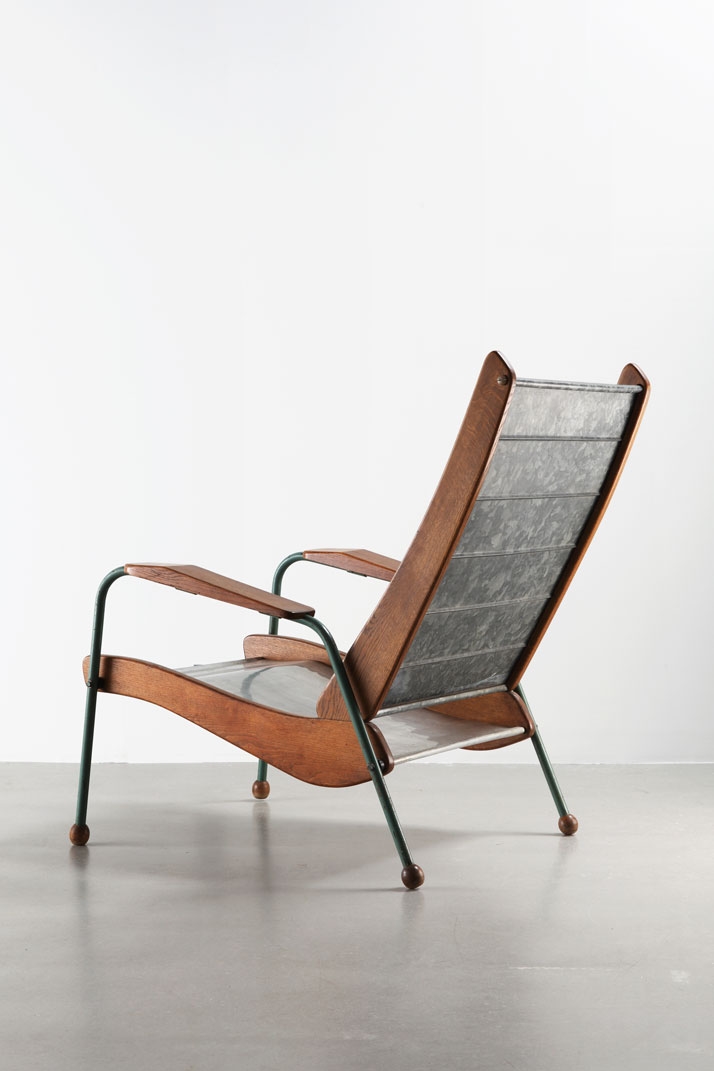 COLONIAL-TYPE ARMCHAIR N° 352, VARIATION, CA.1952 STEEL TUBE, ALUMINUM SHEET, GALVANIZED STEEL SHEET AND WOOD COLLECTION LAURENCE AND PATRICK SEGUIN (C) GALERIE PATRICK SEGUIN
COLONIAL-TYPE ARMCHAIR N° 352, VARIATION, CA.1952 STEEL TUBE, ALUMINUM SHEET, GALVANIZED STEEL SHEET AND WOOD COLLECTION LAURENCE AND PATRICK SEGUIN (C) GALERIE PATRICK SEGUIN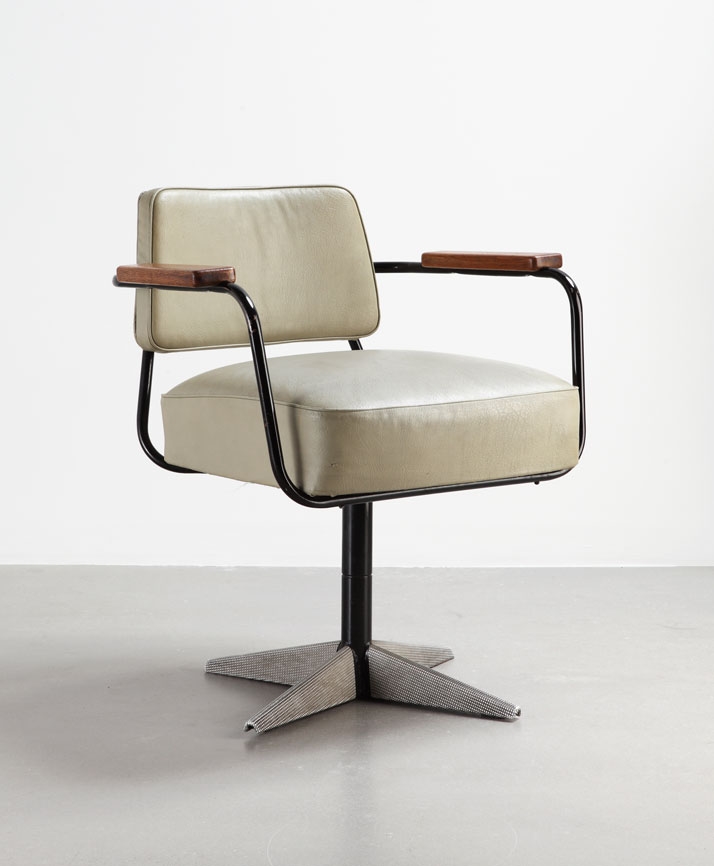 DIRECTION NO 353 SWIVELING OFFICE CHAIR, 1951 BENT SHEET STEEL, STEEL TUBE, SHEET ALUMINUM “DIAMOND POINT” MOTIF, LEATHERETTE AND WOOD COLLECTION LAURENCE AND PATRICK SEGUIN (C) GALERIE PATRICK SEGUIN
DIRECTION NO 353 SWIVELING OFFICE CHAIR, 1951 BENT SHEET STEEL, STEEL TUBE, SHEET ALUMINUM “DIAMOND POINT” MOTIF, LEATHERETTE AND WOOD COLLECTION LAURENCE AND PATRICK SEGUIN (C) GALERIE PATRICK SEGUIN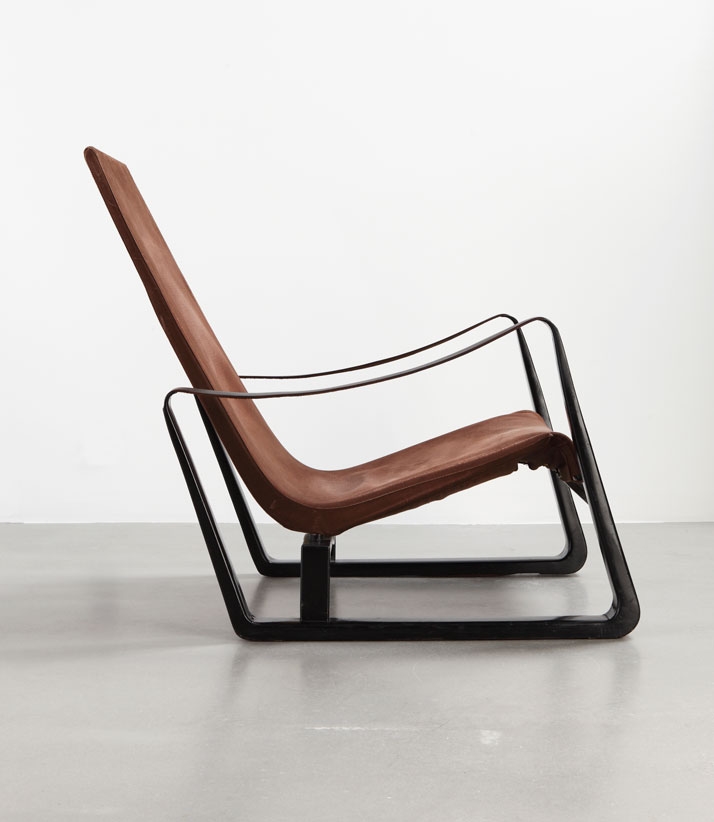 `CITÉ` ARMCHAIR, CA.1933 SHEET STEEL, LEATHER AND STRETCHED CANVAS COLLECTION LAURENCE AND PATRICK SEGUIN (C) GALERIE PATRICK SEGUIN
`CITÉ` ARMCHAIR, CA.1933 SHEET STEEL, LEATHER AND STRETCHED CANVAS COLLECTION LAURENCE AND PATRICK SEGUIN (C) GALERIE PATRICK SEGUIN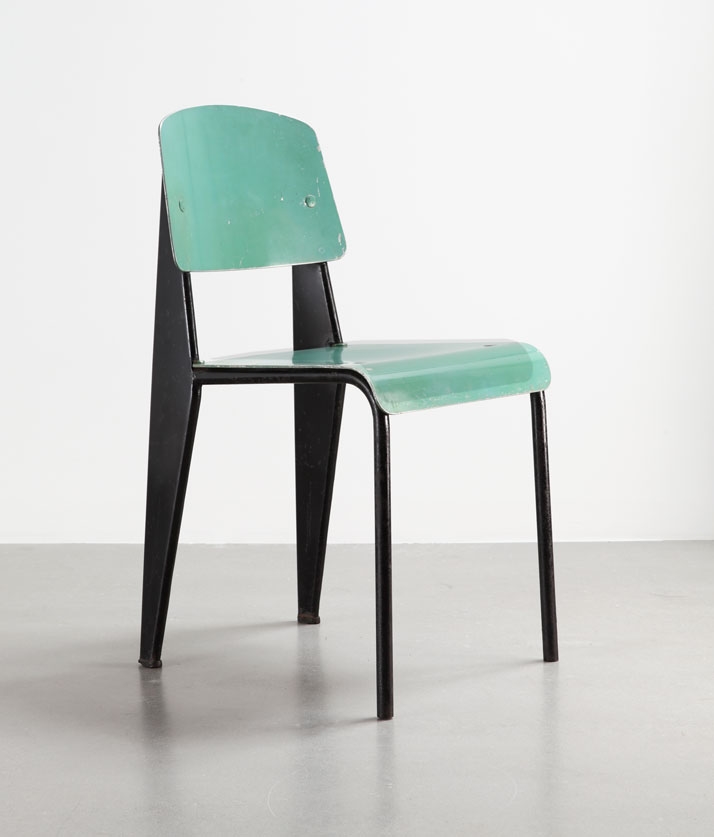 MÉTROPOLE NO 305 CHAIR, VERSION WITH SEAT AND BACKREST IN ALUMINUM, CA. 1953 BENT SHEET STEEL, STEEL TUBE AND SHEET ALUMINUM COLLECTION LAURENCE AND PATRICK SEGUIN (C) GALERIE PATRICK SEGUIN
MÉTROPOLE NO 305 CHAIR, VERSION WITH SEAT AND BACKREST IN ALUMINUM, CA. 1953 BENT SHEET STEEL, STEEL TUBE AND SHEET ALUMINUM COLLECTION LAURENCE AND PATRICK SEGUIN (C) GALERIE PATRICK SEGUIN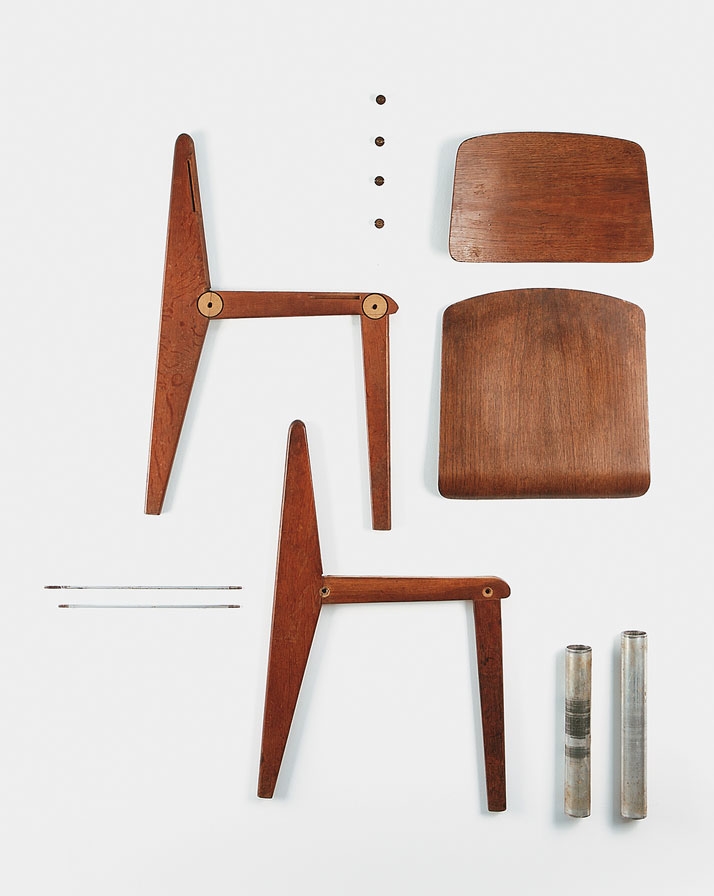 DEMOUNTABLE WOODEN CHAIR CB 22, 1947 SOLID WOOD, MOLDED PLYWOOD AND ALUMINUM TUBE COLLECTION LAURENCE AND PATRICK SEGUIN (C) GALERIE PATRICK SEGUIN
DEMOUNTABLE WOODEN CHAIR CB 22, 1947 SOLID WOOD, MOLDED PLYWOOD AND ALUMINUM TUBE COLLECTION LAURENCE AND PATRICK SEGUIN (C) GALERIE PATRICK SEGUIN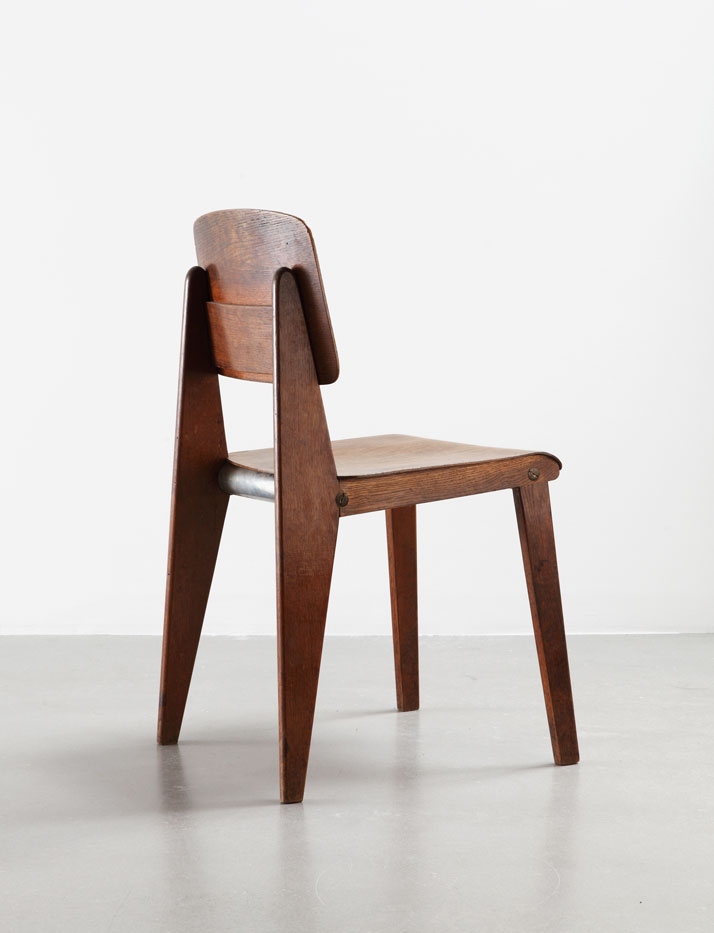 DEMOUNTABLE WOODEN CHAIR CB 22, 1947 SOLID WOOD, MOLDED PLYWOOD AND ALUMINUM TUBE COLLECTION LAURENCE AND PATRICK SEGUIN (C) GALERIE PATRICK SEGUIN
DEMOUNTABLE WOODEN CHAIR CB 22, 1947 SOLID WOOD, MOLDED PLYWOOD AND ALUMINUM TUBE COLLECTION LAURENCE AND PATRICK SEGUIN (C) GALERIE PATRICK SEGUIN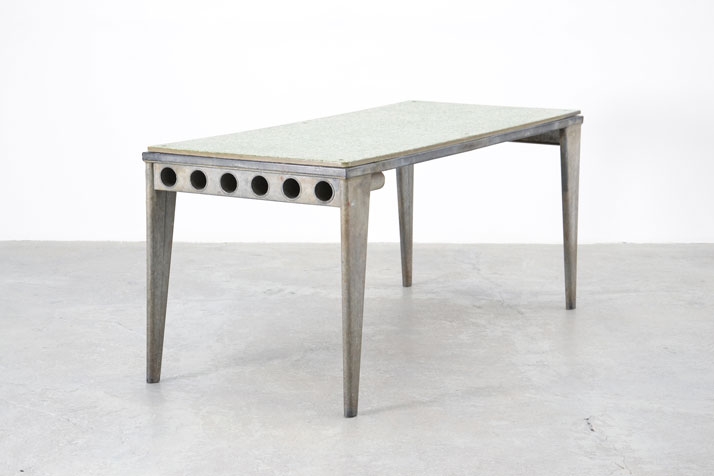 JEAN PROUVÉ, GRANIPOLI TABLE DE REFECTOIRE, 1939 COLLECTION LAURENCE AND PATRICK SEGUIN (C) GALERIE PATRICK SEGUIN
JEAN PROUVÉ, GRANIPOLI TABLE DE REFECTOIRE, 1939 COLLECTION LAURENCE AND PATRICK SEGUIN (C) GALERIE PATRICK SEGUIN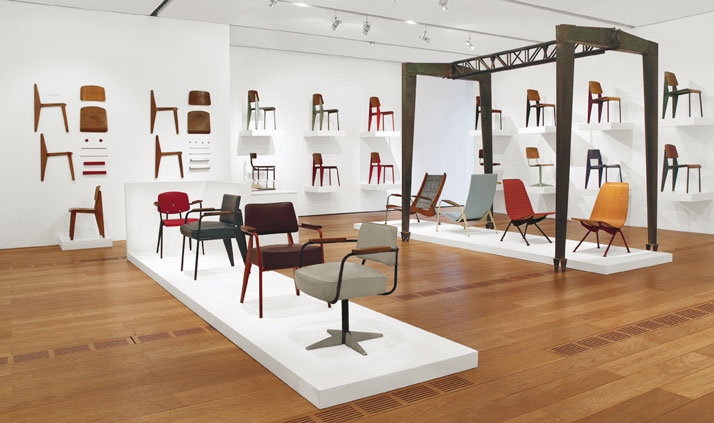 A PASSION FOR JEAN PROUVÉ, INSTALLATION VIEW PHOTO COURTESY OF GALERIE PATRICK SEGUIN
A PASSION FOR JEAN PROUVÉ, INSTALLATION VIEW PHOTO COURTESY OF GALERIE PATRICK SEGUIN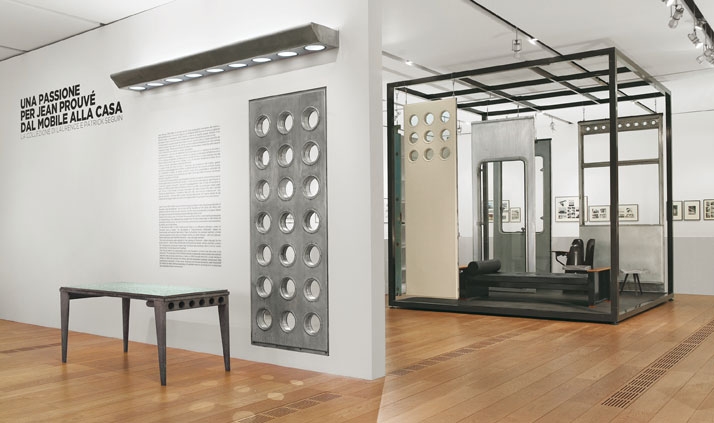 A PASSION FOR JEAN PROUVÉ, INSTALLATION VIEW PHOTO COURTESY OF GALERIE PATRICK SEGUIN
A PASSION FOR JEAN PROUVÉ, INSTALLATION VIEW PHOTO COURTESY OF GALERIE PATRICK SEGUIN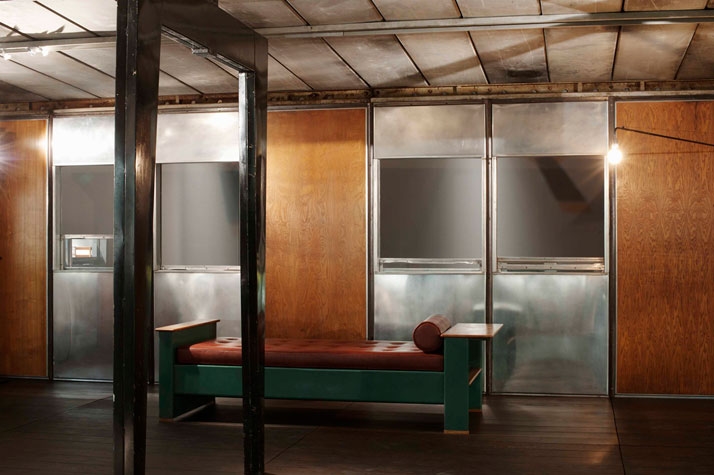 METROPOLE ALUMINUM HOUSE, CA. 1949, METAL ALUMINUM AND WOOD 8X12 M, 26,2X 39,4 FEET, INTERIOR REBUILT ON THE TEST TRACK ATOP THE LINGOTTO, TURIN, ITALY COLLECTION LAURENCE AND PATRICK SEGUIN (C) GALERIE PATRICK SEGUIN
METROPOLE ALUMINUM HOUSE, CA. 1949, METAL ALUMINUM AND WOOD 8X12 M, 26,2X 39,4 FEET, INTERIOR REBUILT ON THE TEST TRACK ATOP THE LINGOTTO, TURIN, ITALY COLLECTION LAURENCE AND PATRICK SEGUIN (C) GALERIE PATRICK SEGUIN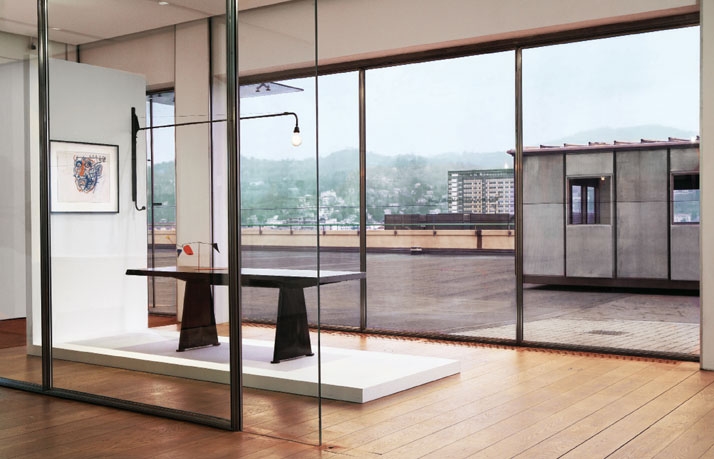 A PASSION FOR JEAN PROUVÉ, INSTALLATION VIEW PHOTO COURTESY OF GALERIE PATRICK SEGUIN
A PASSION FOR JEAN PROUVÉ, INSTALLATION VIEW PHOTO COURTESY OF GALERIE PATRICK SEGUIN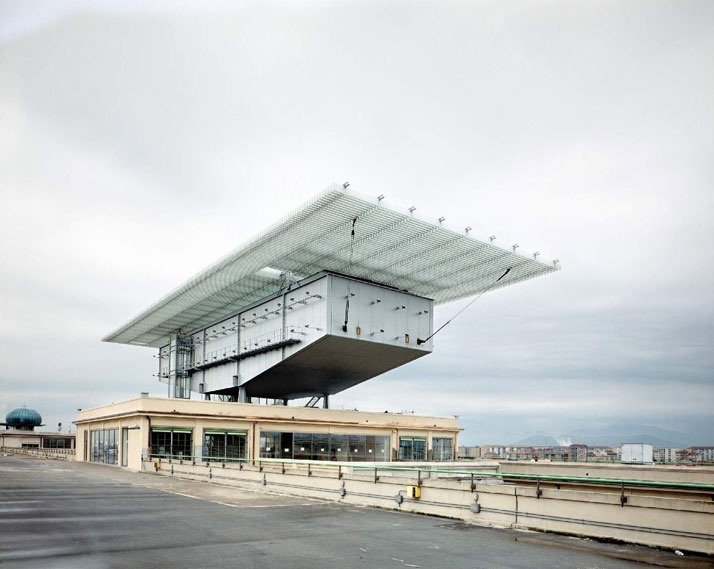 THE LINGOTTO BUILDING, PHOTO BY MASSIMO LISTRI COURTESY OF PINACOTECA GIOVANNI E MARELLA AGNELLI
THE LINGOTTO BUILDING, PHOTO BY MASSIMO LISTRI COURTESY OF PINACOTECA GIOVANNI E MARELLA AGNELLI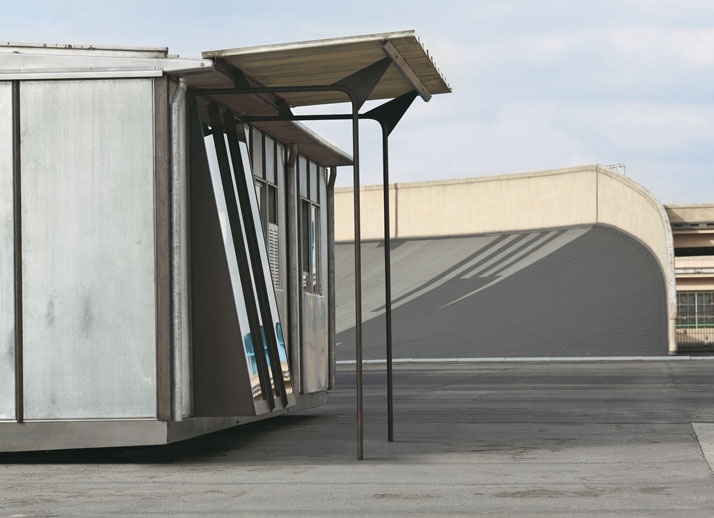 METROPOLE ALUMINUM HOUSE, CA. 1949, METAL ALUMINUM AND WOOD 8X12 M, 26,2X 39,4 FEET REBUILT ON THE TEST TRACK ATOP THE LINGOTTO, TURIN, ITALY PHOTO COURTESY OF GALERIE PATRICK SEGUIN
METROPOLE ALUMINUM HOUSE, CA. 1949, METAL ALUMINUM AND WOOD 8X12 M, 26,2X 39,4 FEET REBUILT ON THE TEST TRACK ATOP THE LINGOTTO, TURIN, ITALY PHOTO COURTESY OF GALERIE PATRICK SEGUIN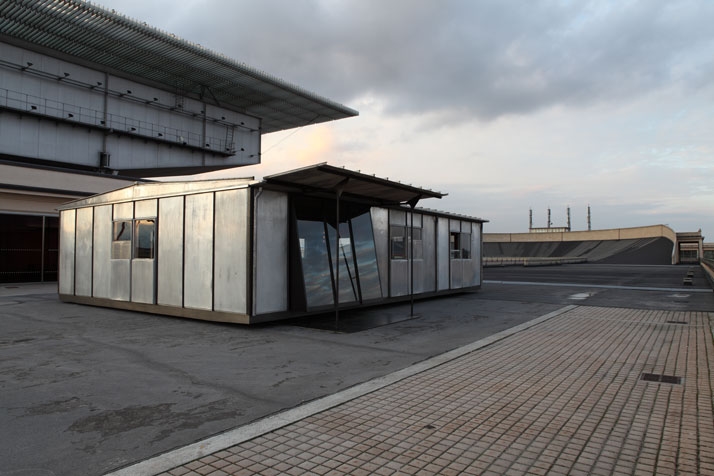 METROPOLE ALUMINUM HOUSE, CA. 1949, METAL ALUMINUM AND WOOD 8X12 M, 26,2X 39,4 FEET REBUILT ON THE TEST TRACK ATOP THE LINGOTTO, TURIN, ITALY PHOTO COURTESY OF GALERIE PATRICK SEGUIN
METROPOLE ALUMINUM HOUSE, CA. 1949, METAL ALUMINUM AND WOOD 8X12 M, 26,2X 39,4 FEET REBUILT ON THE TEST TRACK ATOP THE LINGOTTO, TURIN, ITALY PHOTO COURTESY OF GALERIE PATRICK SEGUIN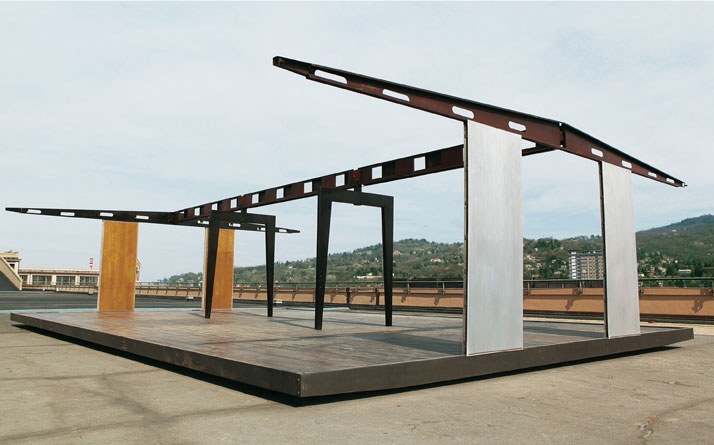 METROPOLE ALUMINUM HOUSE, CA. 1949, METAL ALUMINUM AND WOOD 8X12 M, 26,2X 39,4 FEET REBUILT ON THE TEST TRACK ATOP THE LINGOTTO, TURIN, ITALY PHOTO COURTESY OF GALERIE PATRICK SEGUIN
METROPOLE ALUMINUM HOUSE, CA. 1949, METAL ALUMINUM AND WOOD 8X12 M, 26,2X 39,4 FEET REBUILT ON THE TEST TRACK ATOP THE LINGOTTO, TURIN, ITALY PHOTO COURTESY OF GALERIE PATRICK SEGUINREAD ALSO: TERRA INSOLA WORKSHOP / CHANIA CRETE